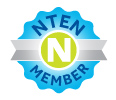Sonny Cloward takes me to task (nicely) for my tendency to create a black and white distinction between open source and commercial/proprietary models in the nonprofit sector.
And to be honest, I am in a continuous struggle between marketing speak (simple statements that get core ideas across) and a more sophisticated discussion. The black/white stuff is more marketing speak than anything else-- the real world is more complicated.
So let me try to lay out some core principles:
(1) Amortization. The cost of software should be amortized across as many possible users of that software. If I have 1,000 customers, they each pay 1/1000th of the development costs.
(2) Affordability. Technology should be available and affordable to the broadest range of the nonprofit sector as possible.
(3) Customer Control. Decisions about software functionality should be as close to the customer as practical. If I need the thing to do "A", I or a consultant I hire can make it do "A".
Some more general core principles include those from the National Strategy for Nonprofit Technology:
- Technology Transparency
- Open Systems
- Fair Exchange
- Fair Compensation
The current implementation of Salesforce.com for nonprofits meets a whole lot more of these principles than open source alone. In fact, it was for that reason that Paul Hagen and I went to Suzanne DiBianca, the ED of the Salesforce.com Foundation, a couple years back to accelerate its deployment and suitability for NPOs.
The thing I call Social Source brings all these principles together into an ecosystem that serves customer, rather than vendor needs. It is the ecosystem of consultants, integrators, developers, and customers that create the benefit for the nonprofit sector. I can certainly do this in a proprietary model if I can convince the community to give up their intellectual property rights.
Open source is the foundation of the social source approach because it puts everyone developers, integrators, hosters and customers in an equal power position. Everyone controls the technology and no one controls the technology. Innovations are automatically shared (primarily through the community, but reinforced by the license).
If tomorrow Oracle made a hostile bid for Salesforce.com, the likelihood of them maintaining their services for nonprofits would be in serious doubt. This is not a reflection on the good hearted people at the company, it is simply the reality of U.S. corporation owning intellectual property--when ownership changes, the new owner calls the shots.
Again, let me be clear, if I were advising a client today I would encourage them to go to a trustworthy vendor (and there are lots of them out there) and purchase a solution. It will work for them and there are currently no good alternatives.
If I'm talking to a Foundation about how to improve the way the nonprofit sector uses technology, I'm going to make the case that we need a new model- social source.
Open source is a necessary, but not sufficient condition for this new model. We still need vendors, economic transactions, NTAPs, collaboration, educated customers, support and training options. But when you build your model on open source, control devolves to the folks with the need...the customer. This is not such a bad thing.
Further reading on Social Source:
Jonathan Peizer
Gideon Rosenblatt

